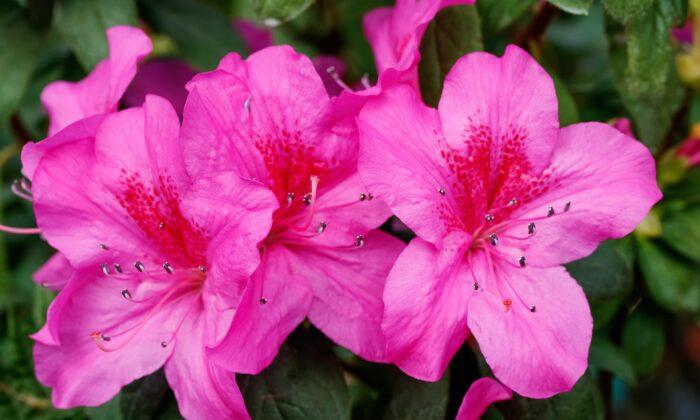The eastern United States has dozens of native species, and many were introduced into garden cultivation almost as soon as the smallest villages were developed. The Gulf and Atlantic states and the Pacific Northwest are the best areas to grow rhododendrons in the States. There are azalea species that are winter hardy and will grow in any area of North America where shrubs can grow, but there are many more varieties and flower colors available in warmer climates.
Except for the azaleas that naturally grow in swamps, they all need two things: good drainage and acidic soil. Most of them should not be planted in low areas where they will stay waterlogged or on top of a hill where they will dry out too fast. The best soil amendment to add to the flower bed is peat moss. If your landscape has good garden soil to begin with, then add as much as 50 percent peat moss.
If you live in an area with a high natural limestone content, such as most of the middle portion of the country that was not listed above as good places to grow azaleas, then you can go as high as 100 percent peat moss. This means replacing all the soil in the bed, but that may not work if the surrounding soil will not allow for drainage. In that case, the azalea bed should be a raised bed. A bed of 100 percent peat moss may need to be replaced every decade or two as the peat moss decays away. That is a lot of work. It may be better to find some other shrub to plant.
Soils in low rainfall areas often have a high pH, making them unsuitable for growing healthy azaleas.
The short-term immediate solution is to apply a soluble iron formulation directly to the plant’s leaves. Then apply more to the root system. Your local garden center should have products with chelated iron or liquid iron. Follow the label directions. Too much is harmful to the plant.
The better long-term solution is to maintain the soil so that it retains an acidic pH of between 5 and 6. If possible, add peat moss to the soil. Use it as mulch around the plants. Apply aluminum sulfate to the soil and use fertilizers that say they will acidify the soil or say that they are made for azaleas, camellias, rhododendrons, and pin oaks. Again, follow the label directions as too much is harmful to the plants trying to grow roots in that soil.






